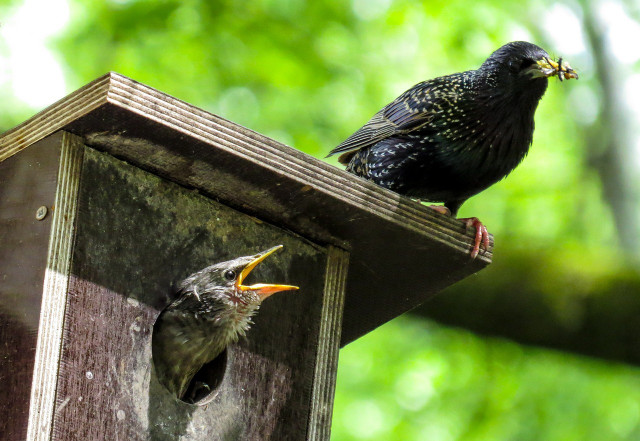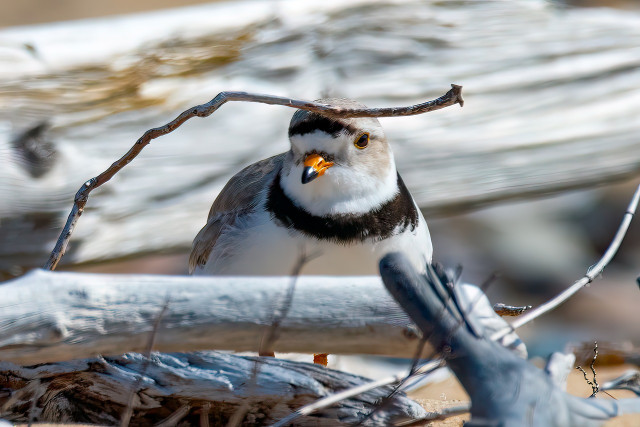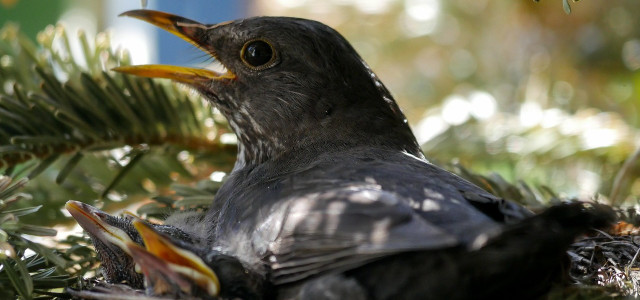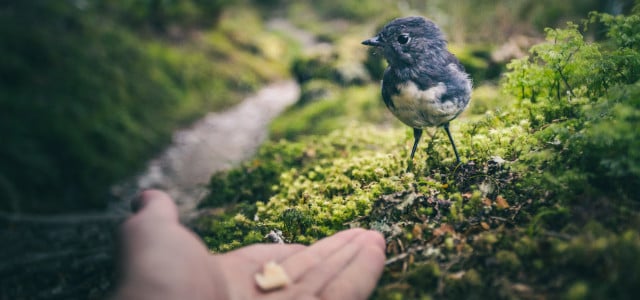There are several ways that birds in the US stay warm in winter, which you’ll discover as you read through this guide.
There are hundreds of bird species in America, ranging from the California Quail to the American Robin to the American Goldfinch. Some of the most common species in North America include the red-eyed vireo, yellow-rumped warbler, European starling, and the house sparrow. These birds can be found in various states around the country.
Some species of bird migrate during the fall or spring seasons, while others stay in the same place all year round. However, to survive in colder climates, many birds will use special techniques to keep themselves warm. This helps them to thrive while exposed to lower temperatures. So, what are these methods, and how do birds stay warm in winter?
How Do Birds Stay Warm in Winter

If you’ve ever traveled to a cold country, you’ll know how easy it is to wrap up and protect yourself in cold temperatures. However, how do birds stay warm in winter?
Birds in colder climates and temperatures have evolved several effective methods to keep warm during the winter months. We’ll take a look at some of the methods they use below:
- Feathers: Many birds use their feathers to trap pockets of air around their bodies, which helps to keep them insulated. Many species also grow extra feathers in the late fall months to prepare for winter. The oil coating that is found on birds’ feathers helps to keep them waterproof, helping to keep them drier in wet conditions. Both of these factors make feathers great insulators and help birds to stay warm in winter.
- Nesting: Many bird species nest during the winter months, with some examples including the American goldfinch, American robin, blue jay, and cedar waxwings. These small birds will usually gather in large flocks and nest in trees, bird boxes, shrubs, or near trunks of trees. All of these small and tight spaces allow the birds to share body heat as well as conserve heat. By sticking together, the birds help to keep each other warm.
- The sun: Some birds will take advantage of the sun’s heat by turning their backs to the sun and raising their feathers slightly to heat themselves up. They may also spread their wings while doing so, which should help them to heat up faster due to a wider surface area being exposed.
- Legs and feet: Birds can constrict blood flow to parts of their legs and feet, which helps to reduce heat loss. Their legs and feet are also covered with specialized scales, which help with heat loss too. Sometimes, you may see a bird standing on one leg or crouched, covering both legs. Again, this helps to shield their bare skin from the colder conditions.
- The beak: Another way birds can keep warm is by tucking their bills into their feathers. This helps to keep them warm and allows them to breathe warm air from their body heat.
- Fat reserves: Many birds will build up a fatty layer to prepare for the winter months, helping to provide them with extra insulation and energy.
All species have their own tricks for keeping warm. Some species of bird native to the US, such as mourning doves and egrets, have special feathers that disintegrate into powder. The powder is used to add waterproof protection to their feathers. For ducks, geese, gulls, swans, and pelicans, leg tucking is a common method to help these birds stay warm in winter.
How You Can Help Birds During Winter



While birds are quite self-sufficient when it comes to keeping warm during winter, some human activity has made it more challenging for birds to do so.
Some human activities that put birds’ lives at risk include deforestation, commercial and residential building, intensifying agriculture, and road vehicles. These four factors threaten and continue to threaten the natural habitat of birds. They have even endangered some native US species such as the piping plover, Florida grasshopper sparrow, California condor, and the Florida scrub jay.
These species are endangered for reasons including habitat loss and being hunted. However, conservation efforts in recent years have helped to boost their numbers. Despite this, there are several ways that you can help out your feathered friends during the winter months — and even all year round.
- Keep bird feeders full
- See if there are any collision risks for birds in your home or office (such as glass collisions)
- Install roosting boxes
- Reduce your usage of chemicals
- Offer liquid water in winter by using a heated birdbath
- Provide shelter by planting native shrubs or native evergreen trees
- Provide high-energy foods by making homemade suet for birds
- If you want a cat, consider an indoor cat
Protecting birds all year round is incredibly important, as it helps to keep the earth’s natural ecosystem in check. Birds are essential for pollination — just like bees. They also help with seed dispersal, as well as actively helping to keep population numbers in check. Sudden, harsh winters can also put a bird’s life in danger. Therefore, it is vital that we help out our feathery friends.
As well as helping out birds, there are also ways that you can use flowers to help endangered bumblebees. Bees are just as important as birds and help to produce much of the food that we see today, such as apples and melons. If small animals like mice have found their way into your home in winter, learn how to use kind capture methods to catch them without a trap and relocate them to a safe place.
Read more:
- The 15 Most Endangered Animals in America
- 11 Flowering Bushes and Shrubs to Bring Birds and Insects to Your Garden
- Bug Hotels: How to Build Your Own Insect House
Do you like this post?







